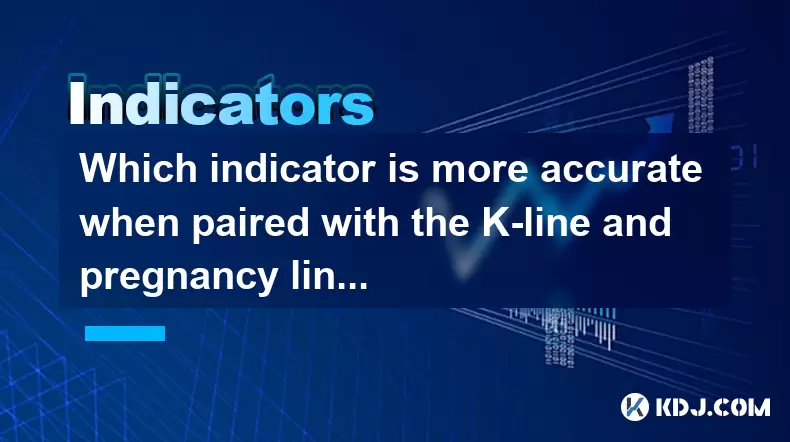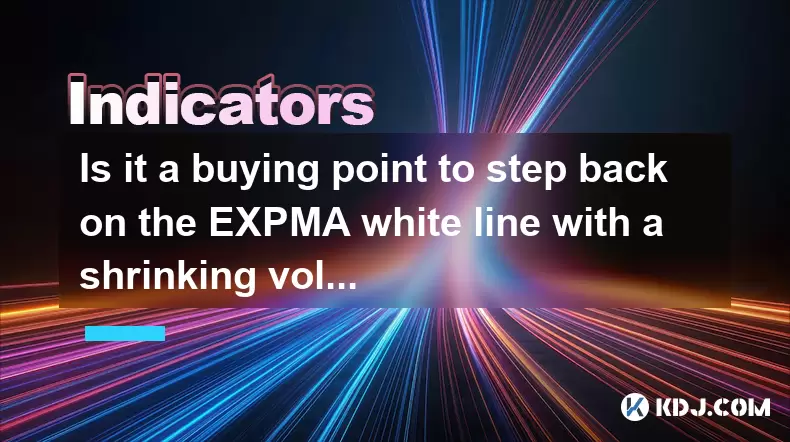-
 Bitcoin
Bitcoin $119300
1.07% -
 Ethereum
Ethereum $3730
3.87% -
 XRP
XRP $3.235
0.29% -
 Tether USDt
Tether USDt $1.000
0.00% -
 BNB
BNB $783.5
1.88% -
 Solana
Solana $188.7
0.25% -
 USDC
USDC $0.0000
-0.01% -
 Dogecoin
Dogecoin $0.2399
-0.44% -
 TRON
TRON $0.3157
2.37% -
 Cardano
Cardano $0.8254
1.94% -
 Hyperliquid
Hyperliquid $42.83
0.14% -
 Stellar
Stellar $0.4372
3.21% -
 Sui
Sui $3.859
4.91% -
 Chainlink
Chainlink $18.53
3.53% -
 Hedera
Hedera $0.2464
0.01% -
 Bitcoin Cash
Bitcoin Cash $519.8
2.46% -
 Avalanche
Avalanche $24.24
2.17% -
 Litecoin
Litecoin $113.7
0.73% -
 UNUS SED LEO
UNUS SED LEO $8.990
0.30% -
 Shiba Inu
Shiba Inu $0.00001390
0.21% -
 Toncoin
Toncoin $3.188
1.49% -
 Ethena USDe
Ethena USDe $1.001
0.02% -
 Polkadot
Polkadot $4.090
-0.91% -
 Uniswap
Uniswap $10.40
4.08% -
 Monero
Monero $326.6
3.12% -
 Bitget Token
Bitget Token $4.627
-0.42% -
 Pepe
Pepe $0.00001281
0.76% -
 Dai
Dai $1.000
0.01% -
 Aave
Aave $291.6
0.98% -
 Cronos
Cronos $0.1269
7.26%
Is it credible that the long-term positive line with low volume breaks through the downward trend line?
A low-volume breakout above a downtrend line may signal a potential bullish reversal, especially if supported by other indicators or institutional accumulation.
Jun 29, 2025 at 02:56 am

Understanding the Technical Setup
In technical analysis, a long-term positive line typically refers to a price movement that has shown consistent upward momentum over an extended period. When this line intersects with a downward trend line, it indicates a potential reversal in market sentiment. The added condition of low volume during this breakout raises questions about the credibility and strength of the move.
Traders often look for volume confirmation when assessing breakouts. A strong breakout usually comes with high volume, suggesting that many participants are actively pushing the price higher. However, when a breakout occurs on low volume, some analysts argue that it could still be valid if supported by other indicators or fundamental factors.
Key Concept: Volume is not always the sole determinant of a breakout's legitimacy, especially in markets like cryptocurrency where liquidity can vary significantly.
Interpreting Low Volume Breakouts
A low volume breakout from a downward trend line may seem suspicious at first glance. In traditional markets, such patterns are often dismissed as false signals because they lack conviction from major players. However, in the context of cryptocurrencies, several unique dynamics come into play.
One possible explanation is that institutional accumulation is occurring without significant retail participation. Large investors might be quietly entering positions without triggering a surge in visible trading activity. This can result in a steady price climb with minimal volume spikes.
- Market manipulation is another factor to consider, particularly in smaller-cap cryptocurrencies.
- Algorithmic trading strategies can also cause subtle shifts in price without noticeable volume changes.
- Reduced volatility periods may naturally lead to lower volume readings even during meaningful price movements.
Important Note: Cryptocurrency markets are known for their erratic behavior, making standard interpretations less reliable compared to traditional assets.
Historical Precedents in Crypto Markets
Looking back at historical data, there have been instances where sustained bullish moves originated from low-volume breakouts. For example, Bitcoin experienced several phases between 2019 and 2020 where price broke out of downtrend channels with relatively muted volume but eventually led to substantial rallies.
Ethereum also demonstrated similar behavior around key support levels, especially during macroeconomic events such as the 2020 DeFi boom and the 2021 bull run. These cases suggest that while low volume may raise red flags initially, it doesn’t necessarily invalidate the potential for a legitimate trend reversal.
- 2019 Bitcoin consolidation phase: Price broke resistance with moderate volume, followed by a multi-month rally.
- 2020 Ethereum bounce from $100: A quiet breakout preceded a sharp rise to new yearly highs.
- 2021 altcoin season: Many mid-tier coins broke downtrends quietly before explosive gains.
Cautionary Insight: Historical performance does not guarantee future results, but it offers context for evaluating current patterns.
Combining Indicators for Better Confirmation
Relying solely on price and volume may not provide enough clarity. Traders should incorporate additional tools to assess whether a low-volume breakout through a downtrend line holds merit.
Popular confirmatory indicators include:
- Moving averages (e.g., 50-day and 200-day): If the price remains above these lines post-breakout, it strengthens the case for a genuine reversal.
- Relative Strength Index (RSI): A rising RSI after a breakout suggests growing buying pressure.
- On-chain metrics: Tools like exchange inflows/outflows or whale transaction data can offer insights beyond candlestick charts.
Technical Tip: Use multiple timeframes—such as daily and weekly charts—to cross-verify the strength and sustainability of the breakout.
Risk Management Considerations
Even if a low-volume breakout appears credible, prudent traders should implement risk controls to protect against false signals. Setting stop-loss orders below the breakout level helps mitigate sudden reversals.
Position sizing becomes crucial in uncertain scenarios. Allocating only a portion of capital to such trades allows room for adjustments if further confirmation emerges later.
- Use trailing stops to lock in profits as the price continues to move favorably.
- Monitor order book depth for signs of institutional involvement or sudden selling pressure.
- Avoid aggressive leverage until the trend is firmly established with stronger volume support.
Risk Reminder: No technical signal is foolproof—especially in volatile crypto markets where sentiment can shift rapidly.
Frequently Asked Questions
What does a long-term positive line indicate in crypto charts?
A long-term positive line reflects sustained buying interest over weeks or months. It shows that despite short-term dips, buyers have consistently stepped in to push prices higher.
Can a breakout be trusted without high volume?
Yes, under certain conditions. If the asset has been consolidating for a long time or if there’s evidence of smart money accumulation, a low-volume breakout can still be valid.
How do I differentiate between a real breakout and a fake one?
Look for follow-through price action, confirmation across multiple indicators, and on-chain data consistency. Avoid relying solely on volume, especially in thinly traded tokens.
Should I enter a trade immediately after a low-volume breakout?
It’s generally safer to wait for retests or secondary confirmations. Entering too early without adequate validation increases exposure to false moves.
Disclaimer:info@kdj.com
The information provided is not trading advice. kdj.com does not assume any responsibility for any investments made based on the information provided in this article. Cryptocurrencies are highly volatile and it is highly recommended that you invest with caution after thorough research!
If you believe that the content used on this website infringes your copyright, please contact us immediately (info@kdj.com) and we will delete it promptly.
- TRON, Crypto Payroll, and Stablecoins: A New York Minute on the Future of Finance
- 2025-07-25 08:30:11
- WazirX, Revote, and Crypto Unlock: A New York Minute on the Latest Developments
- 2025-07-25 06:50:11
- Hong Kong Stablecoin Regulation: Navigating the Hype and Hurdles
- 2025-07-25 08:30:11
- Bitcoin LTHs, CDD Ratio, and Distribution: What's the Deal?
- 2025-07-25 08:50:12
- Satoshi-Era Bitcoin Whale Awakens: $469 Million in BTC on the Move
- 2025-07-25 06:30:11
- TIA Tokens, Crypto Shift & Ripple Effect: What's the Deal?
- 2025-07-25 07:10:11
Related knowledge

Should I go all in when DIF crosses DEA?
Jul 25,2025 at 12:42am
Understanding DIF and DEA in MACD AnalysisWhen traders analyze DIF and DEA in the context of the Moving Average Convergence Divergence (MACD) indicato...

Should I go all in when the upper edge of the box is broken?
Jul 25,2025 at 01:50am
Understanding the 'Box' in Cryptocurrency Price ChartsThe term 'box' in cryptocurrency trading typically refers to a price consolidation range where t...

Should I go all in when the parabolic turning signal appears?
Jul 25,2025 at 06:36am
Understanding the Parabolic Turning Signal in Crypto TradingThe parabolic turning signal is a technical indicator derived from the Parabolic SAR (Stop...

Should I follow up with a full position when the trading volume suddenly increases?
Jul 25,2025 at 12:28am
Understanding Sudden Increases in Trading VolumeA sudden spike in trading volume often signals heightened market activity and can indicate that new in...

Which indicator is more accurate when paired with the K-line and pregnancy line combination?
Jul 25,2025 at 05:43am
Understanding the K-Line and Pregnancy Line CombinationThe K-line, also known as the Japanese candlestick chart, is a foundational tool in technical a...

Is it a buying point to step back on the EXPMA white line with a shrinking volume?
Jul 25,2025 at 08:56am
Understanding the EXPMA Indicator and Its White LineThe Exponential Moving Average (EXPMA) is a technical analysis tool widely used in cryptocurrency ...

Should I go all in when DIF crosses DEA?
Jul 25,2025 at 12:42am
Understanding DIF and DEA in MACD AnalysisWhen traders analyze DIF and DEA in the context of the Moving Average Convergence Divergence (MACD) indicato...

Should I go all in when the upper edge of the box is broken?
Jul 25,2025 at 01:50am
Understanding the 'Box' in Cryptocurrency Price ChartsThe term 'box' in cryptocurrency trading typically refers to a price consolidation range where t...

Should I go all in when the parabolic turning signal appears?
Jul 25,2025 at 06:36am
Understanding the Parabolic Turning Signal in Crypto TradingThe parabolic turning signal is a technical indicator derived from the Parabolic SAR (Stop...

Should I follow up with a full position when the trading volume suddenly increases?
Jul 25,2025 at 12:28am
Understanding Sudden Increases in Trading VolumeA sudden spike in trading volume often signals heightened market activity and can indicate that new in...

Which indicator is more accurate when paired with the K-line and pregnancy line combination?
Jul 25,2025 at 05:43am
Understanding the K-Line and Pregnancy Line CombinationThe K-line, also known as the Japanese candlestick chart, is a foundational tool in technical a...

Is it a buying point to step back on the EXPMA white line with a shrinking volume?
Jul 25,2025 at 08:56am
Understanding the EXPMA Indicator and Its White LineThe Exponential Moving Average (EXPMA) is a technical analysis tool widely used in cryptocurrency ...
See all articles

























































































